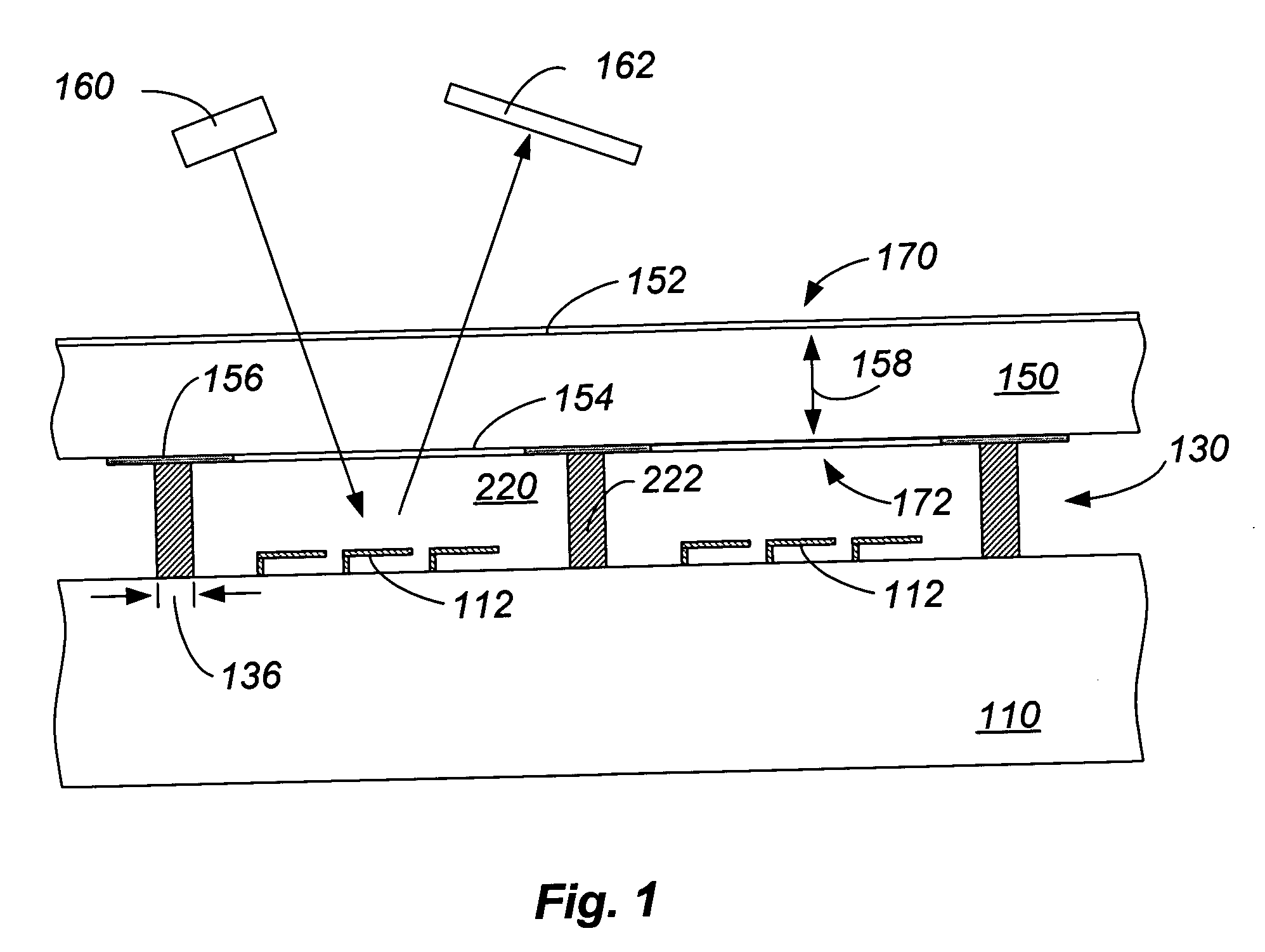Triple alignment substrate method and structure for packaging devices
a substrate and three-dimensional alignment technology, applied in the field of packaging techniques, can solve the problems of difficult to make larger, low yield of liquid crystal panels, and large volume of crts, and achieve the effects of improving integrated structure, convenient use, and high device yield
- Summary
- Abstract
- Description
- Claims
- Application Information
AI Technical Summary
Benefits of technology
Problems solved by technology
Method used
Image
Examples
Embodiment Construction
[0024] According to the present invention, techniques for packaging devices are provided. More particularly, the invention includes a method and structure for aligning and packaging optical devices. Merely by way of example, the invention has been applied to the alignment and bonding of substrates to form a composite substrate package. But it would be recognized that the invention has a much broader range of applicability.
[0025]FIG. 1 is a simplified schematic cross-sectional diagram illustrating a composite substrate package according to an embodiment of the present invention. As illustrated in FIG. 1, a device substrate 110, a spacer structure 130, and a handle substrate 150 are joined by a bonding process to form a composite substrate structure. In some embodiments, the handle substrate is a transparent substrate. In the embodiment illustrated in FIG. 1, a number of MEMS devices 112 are arrayed on a surface of the device substrate. In one embodiment, the MEMS devices includes an...
PUM
 Login to View More
Login to View More Abstract
Description
Claims
Application Information
 Login to View More
Login to View More - R&D
- Intellectual Property
- Life Sciences
- Materials
- Tech Scout
- Unparalleled Data Quality
- Higher Quality Content
- 60% Fewer Hallucinations
Browse by: Latest US Patents, China's latest patents, Technical Efficacy Thesaurus, Application Domain, Technology Topic, Popular Technical Reports.
© 2025 PatSnap. All rights reserved.Legal|Privacy policy|Modern Slavery Act Transparency Statement|Sitemap|About US| Contact US: help@patsnap.com



